Contents
What is Self Relationship in Salesforce
In our previous blog post we had discussed about What is Master-Detail Relationship in Salesforce.In these blog post we discuss about What is Self Relationship in Salesforce
Introduction to self relationship in sales force:-
Self-relationships in Salesforce refer to a relationship where an object can be related to itself. This unique feature allows for the creation of connections within the same object, enabling more efficient data management and enhanced user experiences.
A. What is a self-relationship in Salesforce?
A self-relationship is a type of relationship where an object within Salesforce can be related to another instance of the same object. This means that records within the same object can be linked together, creating a network of connections that streamline data organization and accessibility.
B. Why are self-relationships important in Salesforce?
Self-relationships play a crucial role in improving data management, user experience, reporting, and analytics capabilities in Salesforce. By establishing connections within the same object, organizations can create a structured and organized data environment that enhances overall efficiency.
C. Common misconceptions about self-relationships
One common misconception about self-relationships is that they are only useful for simple data structures. However, self-relationships can be customized and tailored to meet the specific needs of complex business processes, making them a valuable asset for organizations of all sizes.
Benefits of Self-Relationships:-
Self-relationships offer a range of benefits that can significantly impact the way organizations utilize Salesforce for their operations.
A. Streamlining data management and organization
By establishing self-relationships, organizations can create a well-structured data model that simplifies data access and enhances data organization. This streamlined approach ensures that information is easily accessible and logically arranged within Salesforce.
B. Enhancing user experience and efficiency
Self-relationships improve the user experience by providing a more intuitive way to navigate and interact with data. Users can easily access related records within the same object, leading to increased productivity and efficiency in performing tasks within Salesforce.
C. Improving reporting and analytics capabilities
Self-relationships enable organizations to generate more accurate and comprehensive reports and analytics by establishing clear connections between related records. This enhanced visibility into data relationships allows for more informed decision-making and strategic planning.
Creating Self-Relationships in Salesforce:-
To leverage the benefits of self-relationships, organizations need to understand how to effectively set up, customize, and manage self-relationships within Salesforce.
first go to setup after click on the object manager.
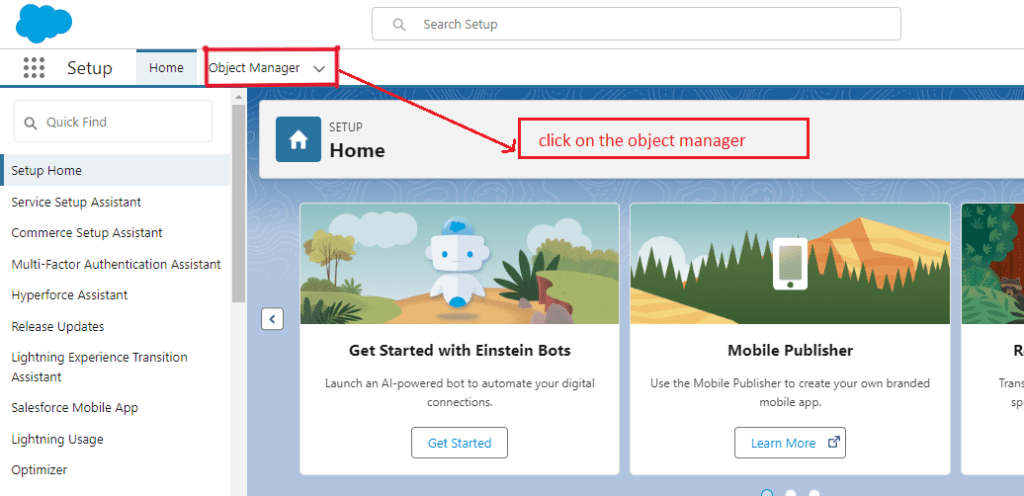
A. Setting up self-relationships in Salesforce
Setting up self-relationships involves defining the relationship fields, creating the necessary lookup fields, and establishing the rules for record connections within the same object. This process lays the foundation for building strong connections between related records.
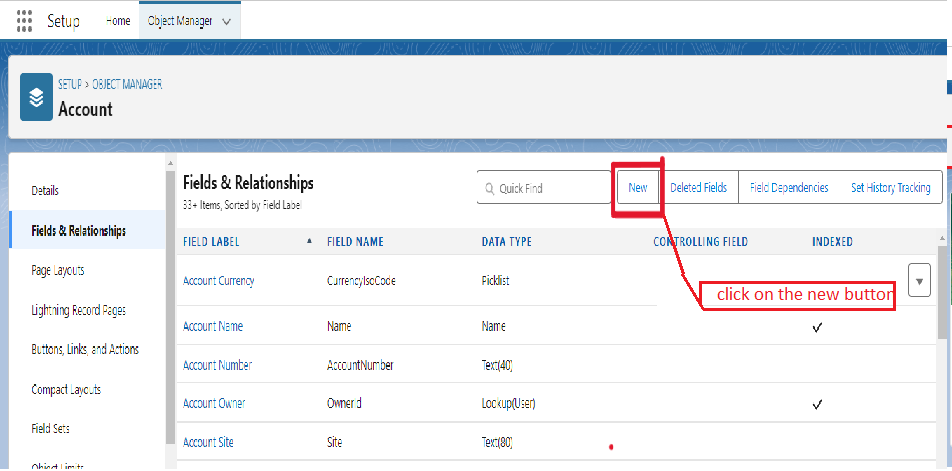
After you click on the new button you have to select relation type(lookup relationship)
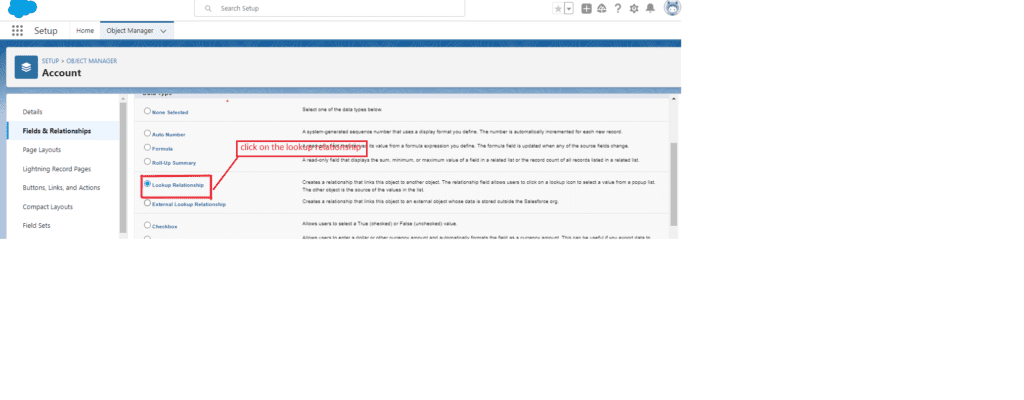
you have select the same object before you selected object.

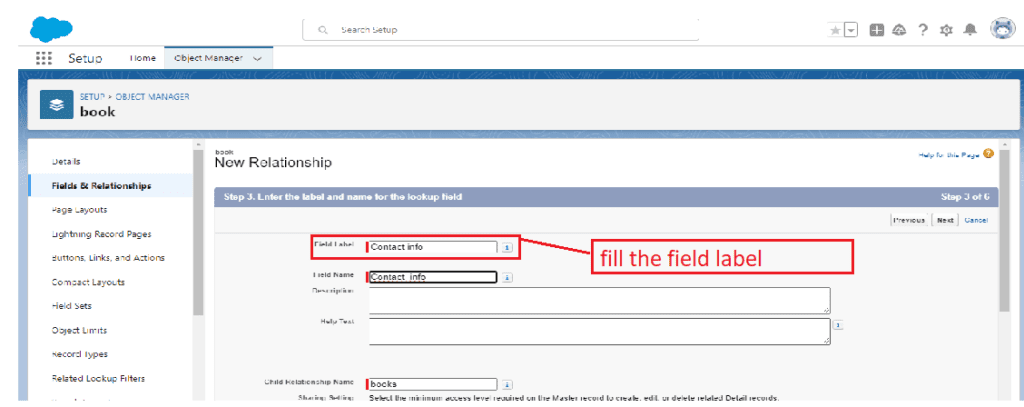
Establish appropriate permissions and security settings for the Master-Detail Relationship to control access to data and maintain data integrity. Define who can view, edit, and delete records within the relationship.
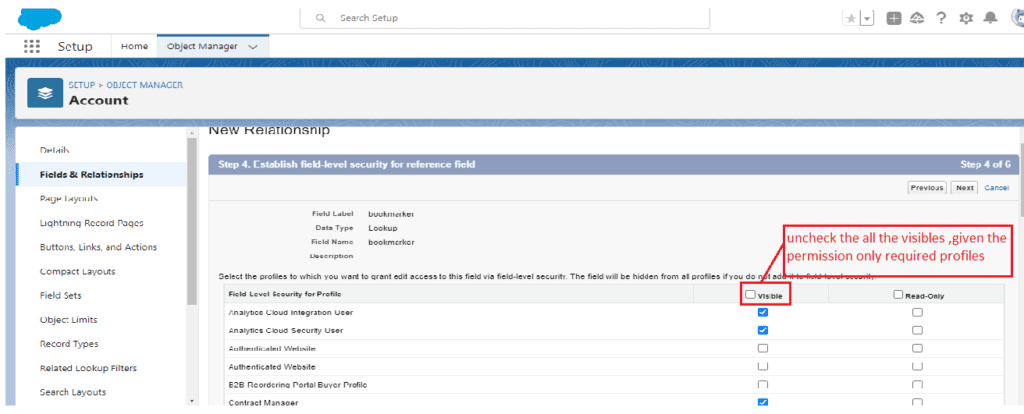
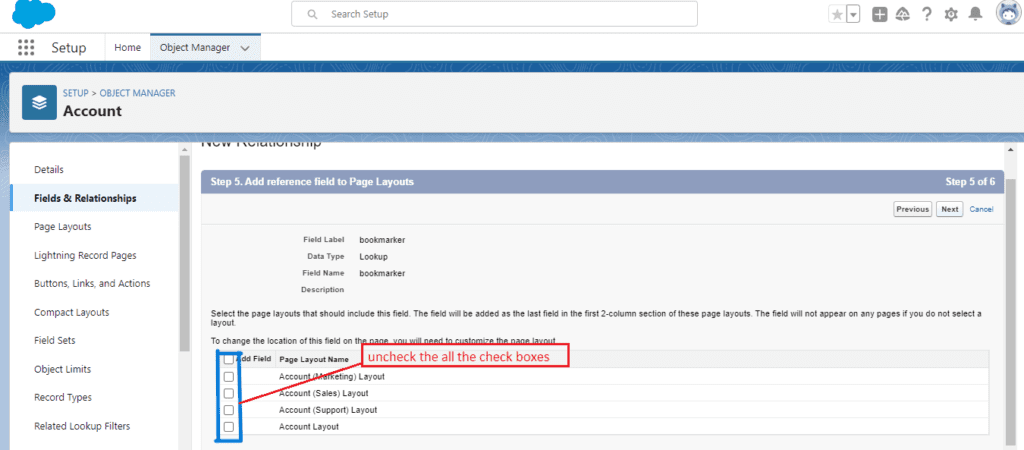
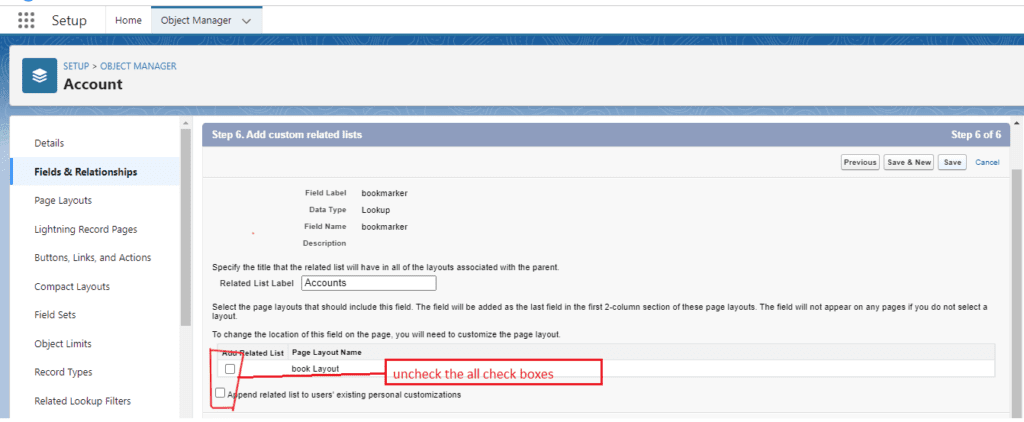
you have to know more about What is Self Relationship in Salesforce click here
B. Customizing self-relationships to meet specific needs
Customizing self-relationships allows organizations to tailor the connections according to their unique requirements. By defining custom fields, validation rules, and sharing settings, organizations can optimize self-relationships to align with their business processes.
C. Best practices for managing self-relationships effectively
To ensure the successful implementation of self-relationships, organizations should adhere to best practices such as maintaining data consistency, avoiding duplication, and regularly monitoring and updating the connections. By following these practices, organizations can maximize the benefits of self-relationships within Salesforce.
Challenges and Solutions:-
While self-relationships offer numerous advantages, organizations may encounter challenges related to data duplication, complex relationships, and system limitations.
A. Avoiding data duplication and consistency issues
To prevent data duplication and maintain consistency, organizations should establish clear guidelines for record creation and update processes. By implementing data quality checks and enforcing data integrity rules, organizations can minimize the risk of inconsistent data within self-relationships.
B. Handling complex data relationships in self-relationships
Complex data relationships within self-relationships may require additional planning and customization to ensure accurate record connections. Organizations can utilize custom validation rules, triggers, and workflows to manage complex data relationships effectively and maintain data integrity.
C. Overcoming limitations and constraints in self-relationships
While self-relationships offer flexibility and customization options, organizations should be aware of the limitations and constraints associated with this feature. By understanding the capabilities and constraints of self-relationships, organizations can proactively address any challenges and optimize their usage within Salesforce.
Maximizing the Potential of Self-Relationships:-
To fully leverage the benefits of self-relationships, organizations can explore advanced integration, automation, and measurement strategies.
A. Integrating self-relationships with other Salesforce features
Integrating self-relationships with features like workflows, process builder, and custom apps allows organizations to create more powerful and automated workflows. By leveraging the synergy between self-relationships and other Salesforce functionalities, organizations can enhance their overall data management capabilities.
B. Leveraging self-relationships for advanced automation and workflows
Self-relationships can be used to automate data processes, trigger notifications, and streamline workflows within Salesforce. By defining custom automation rules and workflows, organizations can optimize the efficiency and effectiveness of their operations.
C. Measuring the impact of self-relationships on business outcomes
To assess the effectiveness of self-relationships, organizations can track key performance indicators related to data management, user experience, and operational efficiency. By monitoring and analyzing the impact of self-relationships on business outcomes, organizations can identify areas for improvement and optimization.
Conclusion:-
In conclusion, self-relationships in Salesforce offer a powerful tool for building strong connections and enhancing data management capabilities. By understanding the benefits, challenges, and implementation strategies associated with self-relationships, organizations can unlock new opportunities for success within Salesforce.
A. Recap of key points discussed in the article
- Self-relationships enable connections within the same object for streamlined data management.
- Benefits include improved user experience, enhanced reporting capabilities, and efficient data organization.
- Challenges such as data duplication, complex relationships, and system constraints can be overcome through best practices and customization.
B. Importance of self-relationships in Salesforce for business success
Self-relationships are essential for organizations looking to optimize their data management processes, enhance user experiences, and drive better business outcomes. By investing in self-relationships, organizations can build stronger connections and achieve greater success within Salesforce.
C. Encouraging further exploration and experimentation with self-relationships
As organizations continue to evolve their Salesforce strategies, exploring and experimenting with self-relationships can uncover new possibilities for innovation and growth. By embracing the potential of self-relationships, organizations can unlock new insights and opportunities to drive their business forward.
FAQs
- What is the difference between a self-relationship and a lookup relationship in Salesforce?
A self-relationship in Salesforce connects records within the same object, while a lookup relationship links records between different objects.
- Can self-relationships be used in all Salesforce editions?
Yes, self-relationships can be utilized in all Salesforce editions, enabling objects to relate to themselves, facilitating hierarchical structures or linking records within the same object.
- What are some common use cases for self-relationships in Salesforce?
Self-relationships in Salesforce are commonly used for hierarchical structures like organizational charts or account hierarchies, facilitating parent-child relationships within a single object.
Remember, self-relationships offer a unique way to connect data within Salesforce, enhancing efficiency, user experience, and reporting capabilities. By implementing self-relationships effectively, organizations can build strong connections for success in their Salesforce journey.
“Building strong relationships with your data leads to stronger insights and better decisions.”
In our next blog post we will discuss about What is Junction Relationship in Salesforce

3 thoughts on “What is Self Relationship in Salesforce”